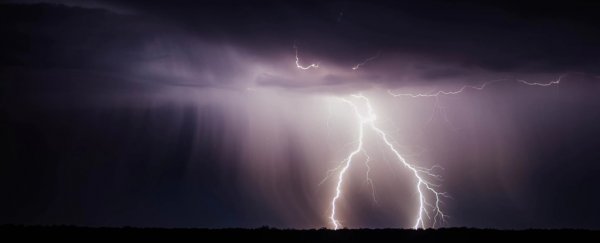Scientists have come up with a new way to figure out how much winter rainfall is going to occur in California - simply check out what was happening near New Zealand over the previous seasons.
They're calling it the New Zealand Index, and it's more accurate than the previous method of predicting rainfall, which was based on El Niño and has become unreliable due to climate change, according to researchers at the University of California, Irvine.
"The interhemispheric teleconnection that we have discovered promises earlier and more accurate prediction of winter precipitation in California and the southwestern US," said Earth system scientist Efi Foufoula-Georgiou.
"Knowing how much rain to expect in the coming winter is crucial for the economy, water security and ecosystem management of the region."
The team found the connection in global weather data dating all the way back to 1950, and up until 2015.
They analysed sea surface temperature and atmospheric pressure in low-temperature convection cells, and found that a sea surface temperature anomaly near New Zealand sets off a chain of events linked to California rainfall.
In July and August - which is actually winter in the Southern Hemisphere - this anomaly kicks off in the southwestern Pacific Ocean, not far from New Zealand. It then dictates air and sea surface temperatures east of the Philippines, via an atmospheric bridge between the hemispheres.
If the sea surface temperature is lower than usual, the atmospheric pressure in the US west coast strengthens the regional jetstream - which then leads to more winter storms in the southwest US.
If the temperature is higher, this leads to the jetstream shifting further north, resulting in a dry season in the southwest US between November and March.
"With the New Zealand Index, we can predict from late summer the likelihood of above- or below-normal winter precipitation in the southwestern US, with a correlation in the order of 0.7 - compared to the El Niño-Southern Oscillation technique, which has a correlation around 0.3 to 0.4," said environmental engineer Antonios Mamalakis.
"Our research also shows an amplification of this newly discovered teleconnection over the past four decades."
It's a surprise result, but one that can be used for more accurate predictions of precipitation in regions that frequently experience drought conditions, such as Arizona, Nevada, Utah and California, all of which are currently unusually dry.
This, in turn, could help authorities develop pre-emptive drought mitigation strategies.
"Predicting drought in the southwestern US is a critical issue for food production and local economies," said Tom Torgersen, director of the National Science Foundation's Water Sustainability & Climate program, which funded the research.
"The discovery of an interhemispheric bridge that affects the winter US jetstream holds the promise of improved precipitation predictability and drought forecasts."
The research has been published in the journal Nature Communications.
